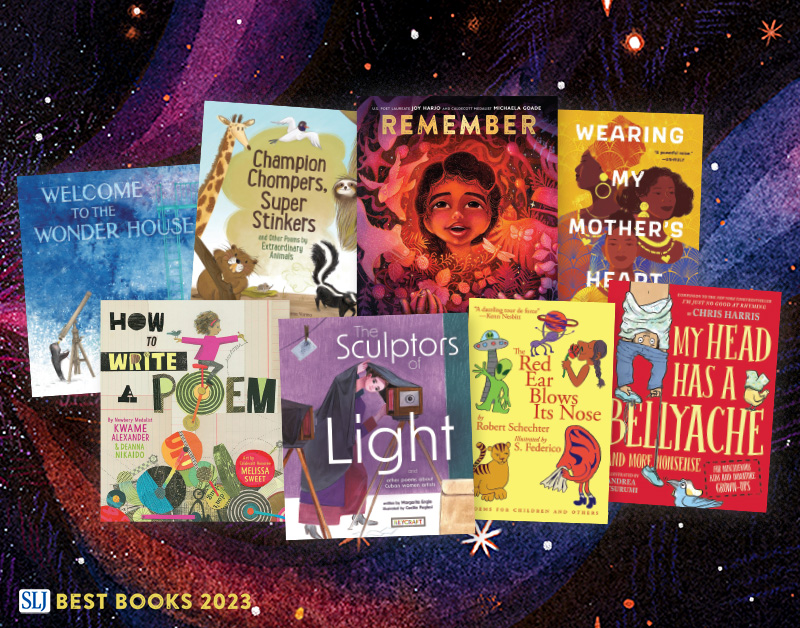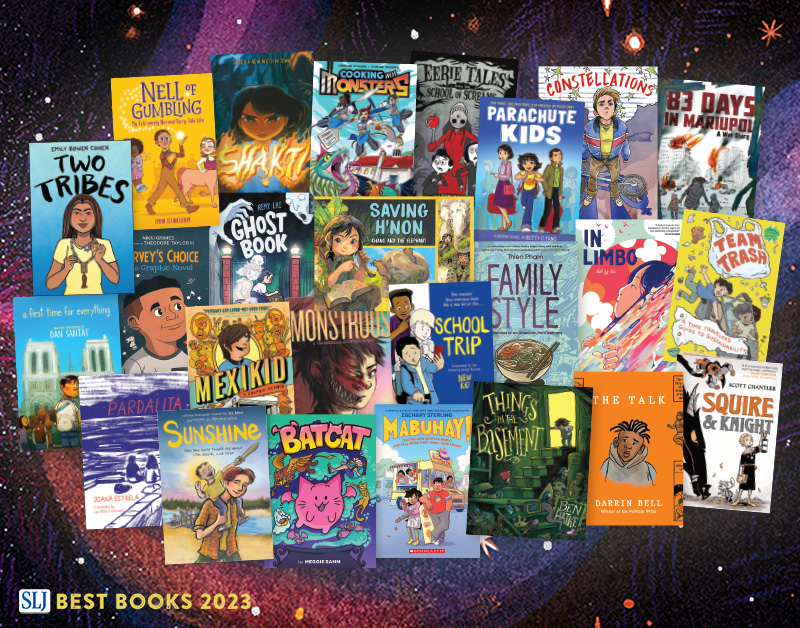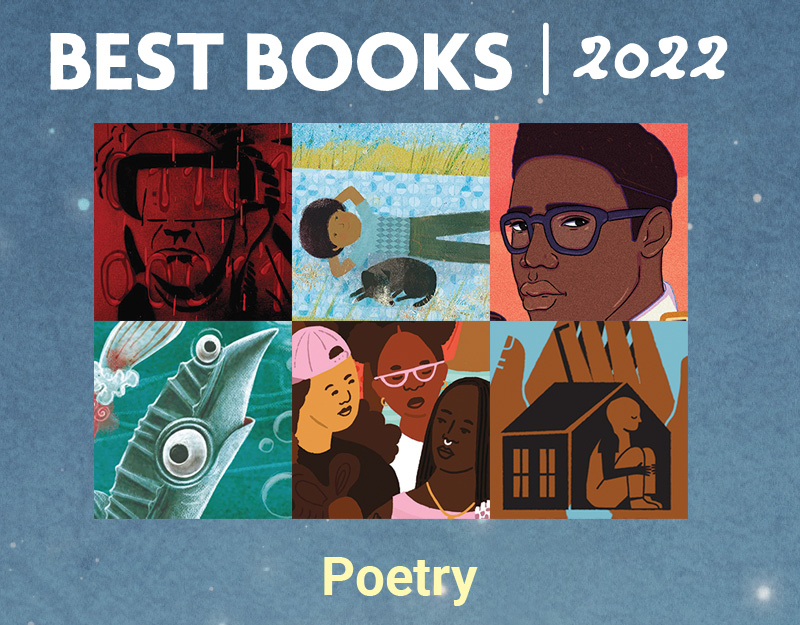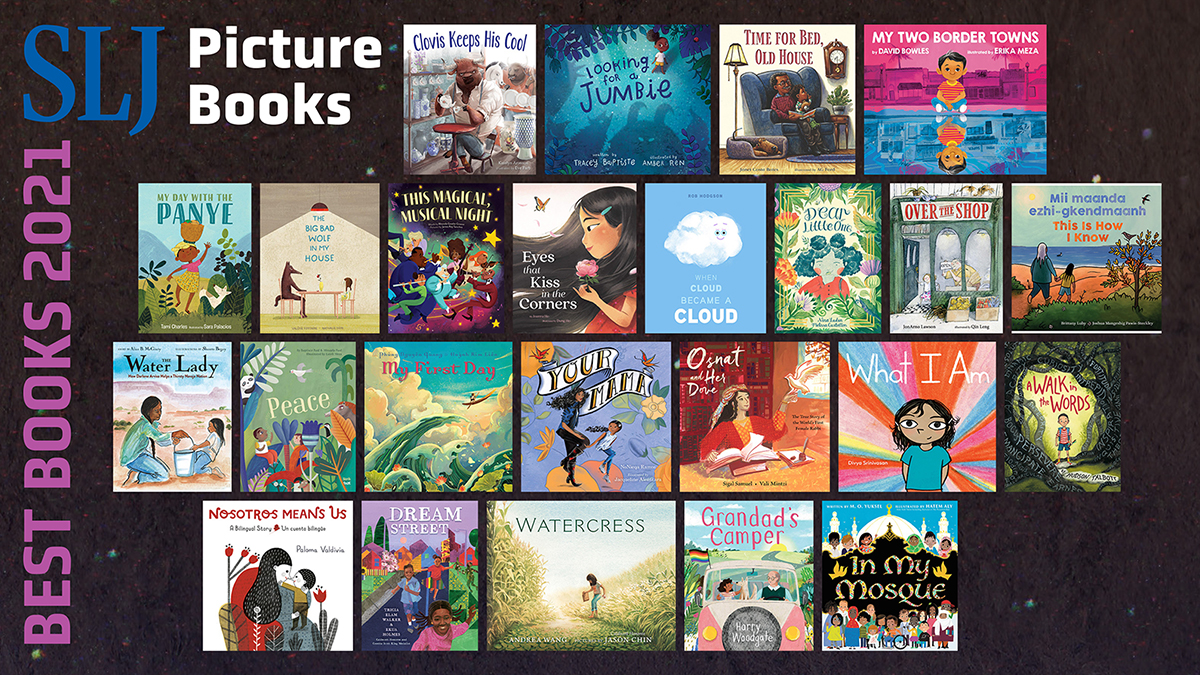31 Days, 31 Lists: 2020 Nonfiction for Older Readers

Okay. Time to confess. In almost every list that I do this month, I read all the books.
Today, that changes.
Reading as many long middle grade fiction books as possible in a given year can be difficult. But reading as many long middle grade non-fiction books as well? That’s a huge challenge. How can you possibly decide what to read? I know I missed a lot of great stuff in 2020. I know this because there’s a pile of books in my house right now that are long middle grade non-fiction titles that I never got a chance to read. So, I have plucked two additional books from my library’s 101 Great Books for Kids list from this year. On today’s list are the titles that I didn’t read personally but that members of my library’s committee thought we should praise loudly, widely, and well. Let’s see if you can figure out which two books they are . . .
2020 Nonfiction for Older Readers
All Thirteen: The Incredible Cave Rescue of the Thai Boys’ Soccer Team by Christina Soontornvat

In 2018, saving twelve boys and their soccer coach trapped in a Thai cave became a worldwide rescue effort. This account chronicles how the plan came together and offers a rewarding Thai perspective along the way. My co-workers were just kooky for this one. One wrote, “Soontornvat puts the story in cultural perspective and this information about Thai customs, history, identity, and culture add layers to the account. And wow did she ever do her research. She writes in the present tense and this adds an immediacy to the story.” Another said, “I’m your basic fiction reader. This book had me engrossed like a really great novel does. And it’s not sappy or overdone. How does she do that? I knew how it ended, but that’s not the point, is it?” Not at all.
ADVERTISEMENT
ADVERTISEMENT
Darwin’s Rival: Alfred Russel Wallace and the Search for Evolution by Christiane Dorion, ill. Harry Tennant

Living a life of adventure and exploration, this canny scientist helped Darwin unlock the secrets of evolution, though his name is practically lost to history today. Man. They say the meek shall inherit the earth but that doesn’t mean they’ll ever be remembered for it. Wallace, by all accounts, lived a fascinating and exciting life. The title is a bit misleading since it takes a while for Darwin to make much of an appearance at all. “Rival” would also suggest that Wallace resented Darwin for taking the bulk of credit for the theory of evolution, but instead the guy just seemed grateful to have helped in any way. A fun, large, long, lengthy, exciting story of science and discovery.
Eagle Huntress: The True Story of the Girl Who Soared Above Expectations by Aisholpan Nurgaiv with Liz Welch

The long tradition of Kazakh eagle training has always been handed down from father to son. Now meet Aisholpan, the girl who lives to defy expectations. I’m always a little worried when there is a children’s autobiography that the co-writer will just make it all sound too too adult. But Liz Welch does a stand up and cheer job with the material. It’s so hard to make a normal life sound interesting, but everything about this book holds your interest. Loved the length and the writing. It’s pretty darn positive towards the tourists, but when you consider how they’ve saved the economy it makes a bit of sense. I do wish the interior photos didn’t give away the fact that she wins the contest (which, to be air, is also mentioned at the beginning of the book) but that’s a small objection. Definitely a winner.
Everest: The Remarkable Story of Edmund Hillary and Tenzing Norgay by Alexandra Stewart, ill. Joe Todd-Stanton

A dual biography if ever I saw one. My six-year-old son has gotten quite fascinated with real world stories of derring do. So when I brought home this book it wasn’t a hard sell to get him interested in the content. The trouble with any tale of mountaineering, of course, is that historically books for children would focus squarely on the white guy going up the slope and ignore the sometimes literally hundreds of other people, many of whom are not white, that made it possible. Stewart works to correct the books of the past by offering as much information as possible about Tenzing Norgay alongside the perfunctory story of Hillary. To be honest, I hadn’t known much about this story to begin with. I certainly wasn’t aware of how many people each expedition would rely upon. Hillary’s work on behalf of the Sherpa people, and Tenzing’s life both before and after the climb, remain my favorite parts of the book. At its best, the book will also do whole pages of amusingly told failed climbing attempts. The art is fantastic when it gives you a clear cut understanding of how difficult climbing Everest truly was. I took one look at that Khumbu Icefall and knew instantly that mountain climbing is not for me. Some kids? They’re gonna wanna scale it.
Farmers Unite! Planting a Protest for Fair Prices by Lindsay H. Metcalf

Though it may resemble a picture book, the sophisticated history at work from Metcalf here will definitely need some older eyeballs. Since I was a child in the 80s, I never quite knew much about the farm crisis during that time (aside from the Doonesbury comics I read, of course). Metcalf, born and raised on a farm, has investigated this story inside and out. For my part, I think there’s a lot of value in hearing about a protest made by folks from rural areas. Particularly since initially it failed. Kids read about successful protests all the time. The idea of reading about one that did not make immediate change is a jolt of reality they may not expect. The roots of the farm crisis aren’t discussed particularly, so be prepared to field some questions from any kid that chooses to read this through. But what an exciting story it is! Clashes with police. Hundreds of tractors gumming up the traffic of D.C. The threat to drive one into the US Department of Agriculture (and then doing it with a kid on a tiny John Deere). The blizzard where the tractors won over the hearts of D.C. residents! Political history doesn’t have to be a stranger to kids anymore and this one is unique.
The Language of the Universe: A Visual Exploration of Mathematics by Colin Stuart, ill. Ximo Abadía

Homeric. The world does not lack for oversized colorful children’s books filled with knowledge on a wide variety of subjects. Yet most of those books contain pretty rote subject matter. History. Science. La de dah. This book goes in a slightly different direction. It’s Mission: To show kids how math is infused into every possible aspect of the world around them. To convey this succinctly, mathematical concepts must be simplified. And generally speaking, Stewart does a top notch job. I might have liked some ideas in here to be from women or people of color, but generally speaking he’s capable of making comprehensible the complicated. Abadía faces the equally awkward challenge of taking this information and making it all fit on a page AND look nice in the process. In the end, kids will not be bored paging through this book. They may latch on to parts they already know (Newton’s Law or binary digits) and then explore from there. This is a book that it would be easy to dip in and out of. Infinitely (ha!) helpful.
Machines That Think! (Big Ideas That Changed the World) by Don Brown

Let the great mathematician Mkuhammad ibn Mūsā al-Khwāriamī walk you through the birth, life, and future of computers in all their myriad forms with this fun and highly informative comic. Essentially, it breaks down the key components behind computers and how they work in such a way that kids will have a rudimentary grasp on the basics, if not a full and in-depth understanding. Ever wondered what punch cards actually had to do with computers or why binary is so key? Heck, this even allows you to understand how microprocessors can get smaller and smaller. Super fun, and be sure to look for the next book in the series on vaccines, A Shot in the Arm, out this coming March.
The Mayflower (History Smashers) by Kate Messner, ill. Dylan Meconis

Prepare to take a deep dive into the story of Thanksgiving. Think you know it already? Think again. Chock full of thorough research, this is the history your schoolbooks won’t teach you. On the one hand, we have way too many Kate Messner books to choose between this year. On the other hand, this book isn’t just needed. It’s imperative. Messner sets up the myths and then smashes them, doing probably the best job I’ve seen in a children’s work of nonfiction to give the Wampanoag their long overdue due. There’s a particularly magnificent part at the end where she discusses a Mayflower celebration in the 70s that wanted to invite the Wampanoag to take part, only to have the white organizers panic when the planned speech by the tribe turned out to be something other than happy dappy. Necessary reading for the 21st century. My sole regret is that I never was able to see the other books in this series.
Pretty Tricky: The Sneaky Ways Plants Survive by Etta Kaner, ill. Ashley Barron

When I was in college I got myself a venus fly trap. It was a tiny little thing, and I kept its soil incredibly moist, when I wasn’t trying to feed it hamburger or dead flies. One day I saw tiny wormlike bugs in the soil and that was the end of my fascination with plants carnivorous and otherwise. Pretty Tricky, being no fool, puts those very plants on its cover but this isn’t a book that laser focuses on one kind of plant. The vegetation between these pages covers plants that use unique camouflage, fool bees and other animals with their appearance (the one that acts like a toilet on purpose may be the most fascinating), grab on to passerby, and essentially use animals and insects to their own advantage. Beautifully illustrated with Barron’s cut paper images. I’ve heard mild criticisms of the book but I don’t buy the SLJ review’s objection that kids will believe that plants “knowingly use these skills to achieve their goals.” Yes, an understanding of what these plants are doing will require a close read, but since I consider this a book for older child readers anyway, that’s not a big issue. It’s fun and funny and how can you not love a book that talk about something called “bladderwort”?
A Sporting Chance: How Ludwig Guttmann Created the Paralympic Games by Lori Alexander, ill. Allan Drummond

In the mid-1900s, a time when disabled people with spinal injuries had little hope, doctor Ludwig Guttmann discovered ways to help them not only survive but thrive. His efforts led to the creation of the wildly popular Paralympic Games. I just had to include this book on today’s list, even though I haven’t had a chance to read it myself. Allow my colleagues at the library to give you their thoughts instead. Said one, “This is non-fiction writing at its very best: it doesn’t talk down to the audience, it covers several serious issues with great clarity, and it never feels dry. Great art from Drummond and photographs.” Said another, “Compelling is the right word! I loved everything Alexander chose to include. And I wasn’t at all disappointed that she took us through Guttmann’s entire life. And I love that the reader is given the chance, without Anderson inserting a cheesy refrain, that he was sensitive to a group that our ableist society had believed were lesser than and doomed even when he had to prove the merits of his work over and over again. Love all of the supporting documents Alexander chose to include as well.” Congrats to the entire team behind this book.
The Talk: Conversations about Race, Love & Truth, edited by Wade and Cheryl Willis Hudson




Thirty excellent authors and artists from different backgrounds talk about how to be anti-racist in a series of powerful short essays, stories, poems, and illustrations. Wow. This is the book of 2020. I have to say, the Hudsons really did a stand up and cheer job editing this. Out of all the writings on these pages, there’s not a dud in the bunch, and some really take your breath away. The standouts I particularly enjoyed were by Chris Myers (his closing piece could have appeared only at the very end), Duncan Tonatiuh, Adam Gidwitz, and Tracey Baptiste’s. But, honestly, they are all breathtaking. It won’t take long for you to read. Seek it out.
Tell Me: What Children Really Want to Know About Bodies, Sex and Emotions by Katharina von der Gathen, ill. Anke Kuhl, translated by Shelley Tanaka

It’s the page of penises that’ll probably unnerve more American parents than anything else. I’m no prude but you gotta understand, it’s a lot of penises (penisi?). You know all those people that get their panties in a twist over sexual education books like It’s Perfectly Normal by Robie H. Harris? Baby, they didn’t know how easy they had it. Please remember that the Europeans often view Americans as downright puritanical when it comes to the human body in children’s literature. We freak out over the smallest of penises. So when you open up this book and see them on lurid display . . . yeah, it’s something. Behold, the most honest and updated book about sex and bodies you have ever seen. Each question is one that a child has posed, and the answers are pretty straightforward. It starts out with the usual, and then gets quite deep. There are questions like “How do voices break?” on the one hand and others like “How does a man get a vagina if he had a penis?” which offers a strong encapsulation of what it means to be transgender. Sex is not all heteronormative in this book, though due to the succinctness of the answers, people will definitely be left wanting more information. Additionally the book briefly cover rape, sexual harrassment, prostitution, and porn as well. There is a slight mention made of being intersex, but the book makes it sound as if they’ll explain more about it later and then never does, so that’s a problem. Otherwise, it’s worth looking at. It’s a lot, but as books on the subject go, it’s probably one of the more honest and modern titles I’ve seen.
Tracking Pythons: The Quest to Catch an Invasive Predator and Save an Ecosystem by Kate Messner
ADVERTISEMENT
ADVERTISEMENT
It’s a master of disguise, can swallow an entire baby deer, and is rapidly devouring the Florida natural wildlife. How do you stop an invasive species you almost can’t see? These scientists may have found the answer. Honestly, this was gripping (no pun intended, python-lovers). I’ve read some books about scientists that drag on a bit, but Messner knows how to keep the information peppy and popping. Who knew that there were so many different methods of attacking the python problem? It’s sobering to think that sometimes you have to give up your dreams of eradication in favor of the more realistic containment. Great photography all the way through, this is a clear cut winner of a book.
We Are Power: How Nonviolent Activism Changed the World by Todd Hasak-Lowy

Change isn’t peaceful, but it doesn’t have to be violent either. Evanston author Todd Hasak-Lowy reveals six historical cases when activism was necessary to improve the world. So the issue with this book isn’t whether or not it’s list-worthy, because I happen to find it extraordinary. Essentially, it breaks down nonviolent activism, shows what works, what doesn’t, and takes six test cases as its examples. It doesn’t soft shoe the difficulties, and even talks about the failures. At the same time, though, it shows how difficult but not impossible it is to make real and lasting change. It also shows how when one method doesn’t work you have to get creative and try something else. No, the issue with this book is whether or not it’s YA or for kids. Abrams is selling it as 10 to 14, so I’m including it because I love it so much. But it definitely needs a couple more eyeballs on it.
Who Do You Think You Are? by Alice Harman, ill. Blok Magnaye

So maybe I’m just a sucker. I like personality quizzes. Yes, when I was young I did every single Seventeen Magazine one I encountered. Yes, when I edited Funny Girl: Funniest. Stories. Ever. I managed to work in a quiz or two (and a horoscope, and a Mad Lib, and a . . .). No, I don’t do the online ones very often, but only because clickbait gives me hives. So encountering this book was sort of inevitable. Inside you will find 20 psychology tests of varying use. Some of it you might assume. Stuff like “Which Zodiac Sign Should You Be?” and “What’s Your Humor?” But then it starts to incorporate stuff like the Barratt Impulsiveness Test, Guilford’s Alternative Uses Test, some Myers-Griggs Type Indicator stuff, and more. Complemented by Magnaye’s geometric designs, it’s an exceedingly good book for that kid that can’t get enough out of trying to figure themselves out.
World of Glass: The Art of Dale Chihuly by Jan Greenberg and Sandra Jordan

Greenberg & Jordan are well-known names in the world of children’s biographies, though I’m more familiar with their picture books. Chihuly just seems like a natural subject, though admittedly I don’t know much about his personal life. Greenberg and Jordan don’t really feel like delving into it anyway. With copious mentions of his early days and scant mention of his marriages or children, the clear focus here is the art. How does one become an artist? How do you find your own path? And it also clears up how a man that lost sight in one eye could create some of this stuff. The photographs are, as you might imagine, gorgeous.
Want to see other lists? Check out what happened this month!
December 1 – Great Board Books
December 2 – Board Book Reprints & Adaptations
December 3 – Transcendent Holiday Picture Books
December 4 – Picture Book Readalouds
December 5 – Rhyming Picture Books
December 6 – Funny Picture Books
December 7 – CaldeNotts
December 8 – Picture Book Reprints
December 9 – Math Books for Kids
December 10 – Bilingual Books
December 11 – Books with a Message
December 12 – Fabulous Photography
December 13 – Translated Picture Books
December 14 – Fairy Tales / Folktales / Religious Tales
December 15 – Wordless Picture Books
December 16 – Poetry Books
December 17 – Unconventional Children’s Books
December 18 – Easy Books & Early Chapter Books
December 19 – Comics & Graphic Novels
December 20 – Older Funny Books
December 21 – Science Fiction Books
December 22 – Fantasy Books
December 23 – Informational Fiction
December 24 – American History
December 25 – Science & Nature Books
December 26 – Unique Biographies
December 27 – Nonfiction Picture Books
December 28 – Nonfiction Books for Older Readers
December 29 – Best Audiobooks for Kids
December 30 – Middle Grade Novels
December 31 – Picture Books
Enjoy!
Filed under: 31 Days 31 Lists, Best Books, Best Books of 2020
About Betsy Bird
Betsy Bird is currently the Collection Development Manager of the Evanston Public Library system and a former Materials Specialist for New York Public Library. She has served on Newbery, written for Horn Book, and has done other lovely little things that she'd love to tell you about but that she's sure you'd find more interesting to hear of in person. Her opinions are her own and do not reflect those of EPL, SLJ, or any of the other acronyms you might be able to name. Follow her on Twitter: @fuseeight.
ADVERTISEMENT
ADVERTISEMENT
SLJ Blog Network
One Star Review, Guess Who? (#202)
Exclusive: Giant Magical Otters Invade New Hex Vet Graphic Novel | News
Parsing Religion in Public Schools
Take Five: LGBTQIA+ Middle Grade Novels
ADVERTISEMENT







